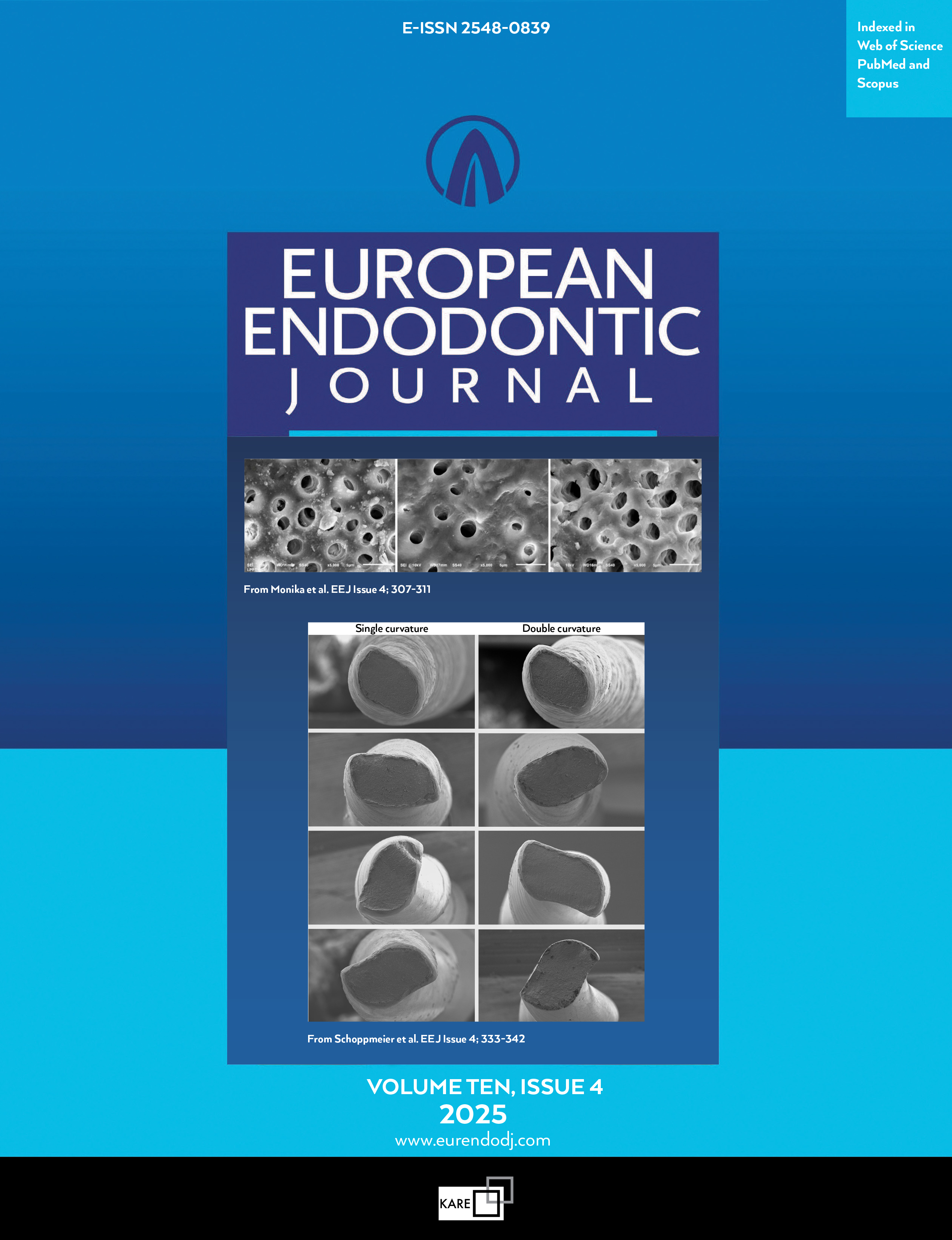Metrics
2024 IMPACT FACTOR
5 year Impact Factor
Eigenfactor Score
2024 CiteScore
Journal Citation Reports
(Clarivate 2025, JIF Rank)
Influence of Thermal Pretreatments on the Cyclic Fatigue Resistance of Novel Reciprocating Nickel-Titanium Files: A Comparison of Low- and High-Temperature Modified Systems
Christoph Matthias Schoppmeier1, Li Sun1, Malin Janson2, Florian Konstantin Wittich1, Anna Greta Barbe11Department of Operative Dentistry and Periodontology, University of Cologne, Faculty of Medicine and University Hospital Cologne, Cologne, Germany2Department of Prosthetic Dentistry, University of Cologne, Faculty of Medicine and University Hospital Cologne, Cologne, Germany
Introduction: The flexibility and fracture resistance of nickel-titanium (NiTi) files have revolutionised root canal preparationbut file fractures caused by cyclic fatigue or torsional failure are challenging. Thermal pretreatments aim to improve fatigue resistance. This study compared the cyclic fatigue resistance (CFR) of four novel reciprocating NiTi file systems with low- versus high-temperature thermal modification under simulated clinical conditions.
Methods: Four systems (n=50) were investigated in vitro: low heat (LH; EdgeOne R-Utopia (Edge Endo, Albuquerque, New Mexico, USA); Procodile Q (Komet Dental, Lemgo, Germany)) and high heat (HH; Reciproc Blue (VDW GmbH, Munich, Germany); CC One Blue (Bondent, San Clemente, California, USA)). CFR was tested under simulated conditions (35±1°C). Two canal configurations were used: a single-curvature canal (60°, 5 mm radius, curvature centre 6 mm from the tip) and a double-curvature canal (additional 70°, 2 mm radius, curvature centre 2 mm from the tip). The files were tested in a pecking motion (3 mm stroke, 0.5 Hz) until fracture occurred. The time to fracture (TTF), number of cycles to fracture (NCF) and fragment length (FL) were measured. Weibull analysis was performed to assess reliability and predict fracture behavior. Fracture fragments were analysed using scanning electron microscopy (SEM). Two-factor ANOVA was performed using instrument type and canal configuration as independent variables for each outcome measure (TTF, NCF, FL). Post hoc comparisons were conducted using Tukey-HSD (α = 0.05). Normal distribution was confirmed using Shapiro-Wilk testing.
Results: Differences in CFR were not significant between LH and HH systems (p=0.203), but were between file systems (p<0.001) and canal configurations (p<0.001). CFR was highest with Procodile Q, then Reciproc Blue, and lowest with EdgeOne R-Utopia. FL was similar between LH and HH (p=0.427) but differed between file systems and canal geometries (p<0.05). SEM analyses confirmed fatigue cracks in highly stressed areas.
Conclusion: The temperature range of thermal pretreatment did not affect cyclic fatigue resistance. Instead, file design and alloy composition were the decisive factors. Clinicians should prioritise structural features and mechanical behavior over heat treatment labels when selecting instruments for complex root canal anatomies. (EEJ-2025-02-023)
Manuscript Language: English
(181 downloaded)


